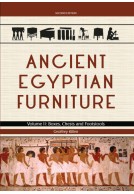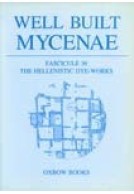Metals, Minds and Mobility (Hardback)
Integrating Scientific Data with Archaeological Theory
Imprint: Oxbow Books
Pages: 200
Illustrations: b/w and colour
ISBN: 9781785709050
Published: 26th October 2018
Script Academic & Professional
Pages: 200
Illustrations: b/w and colour
ISBN: 9781785709050
Published: 26th October 2018
Script Academic & Professional
You'll be £48.00 closer to your next £10.00 credit when you purchase Metals, Minds and Mobility. What's this?
+£4.99 UK Delivery or free UK delivery if order is over £40
(click here for international delivery rates)
Order within the next 2 hours, 18 minutes to get your order processed the next working day!
Need a currency converter? Check XE.com for live rates
(click here for international delivery rates)
Order within the next 2 hours, 18 minutes to get your order processed the next working day!
Need a currency converter? Check XE.com for live rates
Metals, Minds and Mobility seeks to integrate archaeometallurgical data with archaeological theory to address longstanding questions about mechanisms of exchange, mobility and social complexity in prehistory. The circulation of metal has long been viewed as a catalyst for social, economic and population changes in Europe. New techniques and perspectives derived from archaeological science can shed new light on the understanding of the movement of people, materials and technological knowledge. In recent years these science-based approaches have situated mobility at the forefront of the archaeological debate. Advances in the characterisation of metals and metallurgical residues combined with more sophisticated approaches to data analysis add greater resolution to provenance studies.
Though offering better pictures of artefact source, the explanation of artefact distribution across geographic space requires the use of theoretically informed models and solid archaeological evidence to discern differences between the circulation of raw materials, ingots, objects, craftspeople and populations. Bringing together many leading expert contributions address topics that include the invention, innovation and transmission of metallurgical knowledge; archaeometric based models of exchange; characterization and discrimination of different modes of material circulation; and the impact of metals on social complexity.
The 13 papers are organised in three main sections dealing with key debates in archaeology: transmission of metallurgical technologies, knowledge and ideas; prestige economies and exchange; and circulation of metal as commodities and concludes with a review current approaches, situating the volume in a broader context and identifying future research directions.
Other titles in Oxbow Books...















